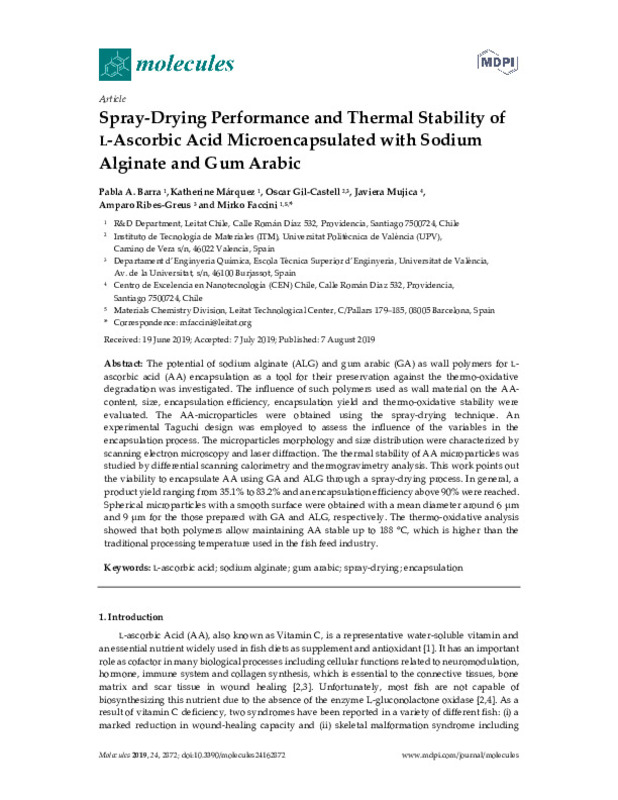JavaScript is disabled for your browser. Some features of this site may not work without it.
Buscar en RiuNet
Listar
Mi cuenta
Estadísticas
Ayuda RiuNet
Admin. UPV
Spray-Drying Performance and Thermal Stability of L-ascorbic Acid Microencapsulated with Sodium Alginate and Gum Arabic
Mostrar el registro completo del ítem
Barra, PA.; Márquez, K.; Gil-Castell, O.; Mújica, J.; Ribes-Greus, A.; Faccini, M. (2019). Spray-Drying Performance and Thermal Stability of L-ascorbic Acid Microencapsulated with Sodium Alginate and Gum Arabic. Molecules. 24(16):1-17. https://doi.org/10.3390/molecules24162872
Por favor, use este identificador para citar o enlazar este ítem: http://hdl.handle.net/10251/192749
Ficheros en el ítem
Metadatos del ítem
| Título: | Spray-Drying Performance and Thermal Stability of L-ascorbic Acid Microencapsulated with Sodium Alginate and Gum Arabic | |
| Autor: | Barra, Pabla A. Márquez, Katherine Mújica, Javiera Faccini, Mirko | |
| Entidad UPV: |
|
|
| Fecha difusión: |
|
|
| Resumen: |
[EN] The potential of sodium alginate (ALG) and gum arabic (GA) as wall polymers for Lascorbic
acid (AA) encapsulation as a tool for their preservation against the thermo-oxidative
degradation was investigated. The influence ...[+]
|
|
| Palabras clave: |
|
|
| Derechos de uso: | Reconocimiento (by) | |
| Fuente: |
|
|
| DOI: |
|
|
| Editorial: |
|
|
| Versión del editor: | https://doi.org/10.3390/molecules24162872 | |
| Código del Proyecto: |
|
|
| Agradecimientos: |
|
|
| Tipo: |
|









